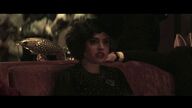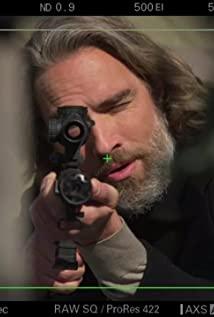(It’s better to eat after watching the video)
"Hypothesis, all souls are on a quest to connect. Corollary, our minds have no awareness of this quest."
The most movie-like TV series I have ever watched, ranging from wide-screen to editing techniques to plots containing science fiction, bloody violence, humor, family affection, and love.
The whole story frame is that the male and female leaders participated in a drug experiment together, took three drugs in three steps, and finally got together. Three kinds of medicine: A medicine, the diagnosis stage, through microwave action on the experimenter to let people review the worst period they have experienced; B medicine, behavioral medicine, based on the A medicine, manufactured by the smart computer (the GRTA) Scenario analysis shows the experimenter's self-defense mechanism and blind spots, allowing the experimenter to better understand themselves; C drug, counter-drug, through the computer design of the experimenter's physiological disease treatment scenarios.
In other words, the whole drama is divided into four parts: reality and the dreaming period of taking medicines A, B, and C. Medicine A is in episodes 2 and 3, medicine B is at the end of episode 3 and episodes 4 and 5. There are two dreams. The male and female protagonists are a couple who robbed monkeys and a couple who stole and protected "Don Quixote". ;C medicine in episodes 7, 8, and 9, the heroine puts down his sister, and the hero understands the "importance" of his family to him and the importance of the heroine to himself.
The main trauma of the heroine is the mother's leaving without saying goodbye and the death of her sister because of herself. The post-diagnosis was borderline personality tendency, pathological grief, traumatic death and loss, self-loathing, suicidal tendency, and a huge gap with her mother. Pretending is her strength. The male protagonist is the family's incomprehension and ridicule of him, and asks him to perjury his brother who sexually harassed (also seems to be a qiang rape) female colleague. He even gave money to the male protagonist’s first love to spend his life with the male protagonist. The male protagonist began to have schizophrenia ten years ago and he had a better brother. Later, the computer analyzed that he had signs of paranoid schizophrenia, delusional to construct an identity "Grimson", and continued timidity.
After experiencing several different types of dreams, the male and female leaders succeeded in being together. In addition to the love of the male and female protagonists, this drama also wrote about the love between the smart computer and the dead doctor, as well as the love between a Japanese woman and a later research doctor. (I look forward to analyzing the different characters played by the male and female protagonists during the BC drug period) His unique charm is that there is a connection between everything, and they appear in different stories of the male and female protagonists. The screenwriter's "context echo" or "foregrounding" writing technique is very flexible. I am pleasantly surprised when there are many connections.
- In the first episode, the man who turned around when the hostess bought a cup in the store was the eldest son of the fur shop owner in the fourth episode.
- When the male protagonist asked in the moot court, he blindly spelled the Rubik's Cube with his hand under the table. This ability is the key to the ninth episode of the male protagonist’s rescue.
- The bearded lawyer in the moot court is the policeman who shot and killed the male protagonist's brother in the ninth episode and rescued him.
- Several advertisements read by "Advertising Brother" to the male protagonist in the subway: One is to be a "father" for the family who has lost his father. The image of the female protagonist is used in the advertisement. This is the first time the male protagonist has seen the female protagonist. ; The second is the "unpaid leave" mentioned by Nebotin Pharmaceutical Company-which is where the main plot development will be next -; the third is the agent friend, there is also this billboard on the street, and the hostess uses the opportunity of the agent friend to approach Staff of Neboten Pharmaceuticals. After getting off the subway, the male protagonist entered the company and made the call that was mentioned in the first advertisement. After hanging up the phone, he was "unpaid leave" (expelled), which was mentioned in the second advertisement.
- At first, the heroine picked up a book in the trash dump in front of a company, which happened to be the father's company. And this book is "Don Quixote", the book I took when I went to find my sister in the second episode, the book I read for patients in the fourth episode, and the book I looked for in the fifth episode were all "Don Quixote."
- The popcorn illusion caused by the male protagonist's temporary schizophrenia also appeared in the elevator in episode 9. It was this reminder that the male protagonist was dreaming.
- The eagle saved by the male protagonist when he was a child is the image of the male protagonist later turned into in the eighth episode.
- When the hero and his dad were chatting on the street, a garbage-eating robot appeared. It also appeared in the plot and the finale of the heroine.
- The book that the protagonist read after returning home in the first episode and the book he read in the car in the fourth episode were written by the mother who appeared later.
- The potted plant on the table they were sitting around in the laboratory of Neboten Pharmaceuticals was the tree that the hostess took her sister to see in episode 8.
- The bionic green plant next to their laboratory is the background of the ninth episode of the heroine and her sister and Hershey
- The episode mentioned by the male protagonist after taking medicine A and the girl named Olivia that he once liked also appeared in the seventh episode.
- The dog that the female protagonist found in the second episode appeared at the end of the last episode with the eagle and the robot that the protagonist used to be.
- In the second episode, the heroine sister once joked that she was the cursed elf sister. This is also the plot setting of the eighth episode.
- In the third episode, the heroine mentioned that the name of the truck driver who killed her sister was Greg F·U·N·Nessland. In the fourth episode, the heroine found a woman to give the child in her belly. Name.
- In the fourth episode, the shape of the antihistamine taken by the female protagonist is A, which is said to have contact to relieve the body's defense mechanism. The plot at this time is after taking the B drug, which is used for computer analysis of the body's defense mechanism.
- In the fourth episode, the password was changed when the heroine and the hero stole into the fur shop. The plot of the password changed also appeared in the elevator in the ninth episode after the heroine rescued the hero.
- The heroine mentioned her father's gray old pickup to the hero, and in the end the heroine drove the car and rescued the hero from the mental hospital.
- The owner of the fur shop once sold bulletproof fur to the male owner. When the Animal Protection Bureau came that night, the owner picked up the so-called bulletproof fur.
- When the male protagonist was waiting for the female protagonist in the car, he saw an illustration in the book of a woman named Olivia wearing a dress with an owl printed on it. In the fifth episode, when the protagonist walked to the front of the owl, Olivia Appeared.
- In the seventh episode, the color of the medicine mentioned by the hero and his companions is the same as that of medicine A red and medicine B blue.
- A drama on TV when the male protagonist talks with his companion. The storyline of this play is the environment the hostess is in at this time.
- The "flaming car" driven by the male protagonist is the car of the Japanese woman in the laboratory in reality.
- In the eighth episode, the policewoman who contacts the male protagonist is the male protagonist’s brother’s fiancée.
- In the ninth episode, the people they saw when they passed the open floor in the elevator were the same people who were experimenting with them.
- At the end of the tenth episode, the story told by the father to his daughter in the car the man and woman passed by is the same as the story told by the narration at the beginning of the first episode. It really echoes from end to end.
The above are some of what I have discovered, and welcome to add discussions about the ones that I haven't noticed or said wrong. Regardless of the plot, the small details of certain characters in the play are also very interesting. In short, this drama is worth burning your brain to watch.
View more about Maniac reviews











